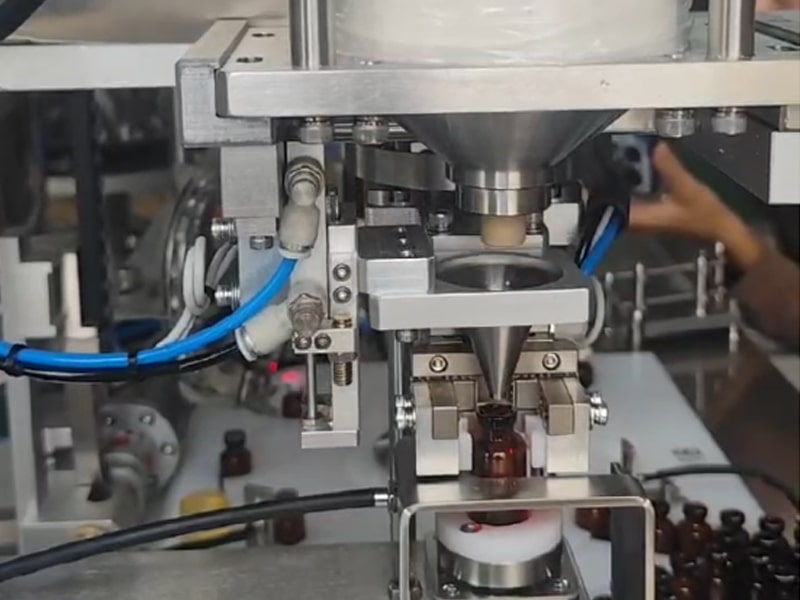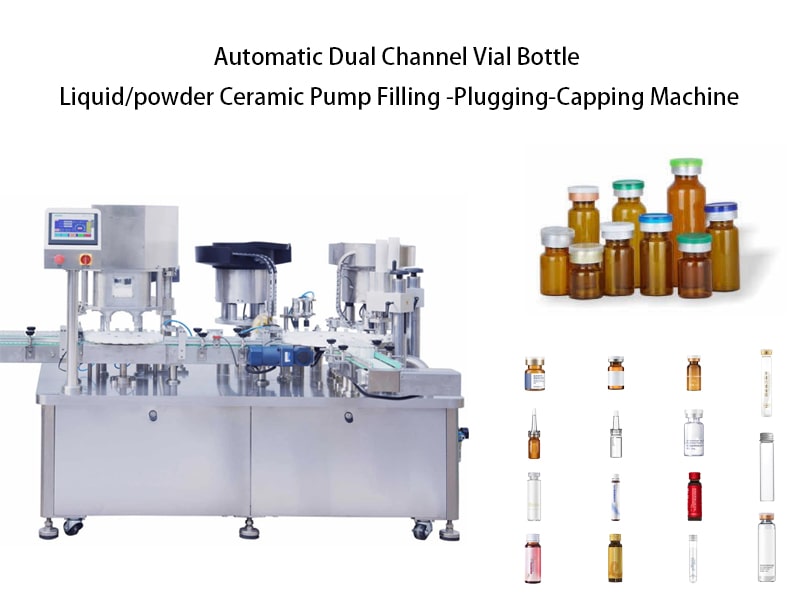Are you managing powdery products like spices, pharmaceuticals, or industrial additives? Do you struggle with maintaining efficiency, accuracy, and consistency in your packaging line? In industries ranging from food and cosmetics to chemicals, even minor dosing errors or delays can lead to material waste, compliance risks, or customer dissatisfaction.
Powder filling machines play a crucial role in ensuring these qualities are met, accurately dispensing granular and powdered materials into containers of various shapes and sizes. From the pharmaceutical industry requiring precise dosage control to the food industry demanding consistent portioning, these machines are indispensable for automating and optimizing the filling process.
This is where a high-performance powder filling machine becomes indispensable. Whether you’re a startup exploring automation or an established manufacturer upgrading your workflow, understanding how these machines operate is critical to optimizing production. Let’s demystify their working principles and how they address common industry challenges.
At SFXB , we recognize the diverse needs of our clients. Our range of powder filling machines is designed to cater to a wide array of applications, ensuring that businesses of all sizes can benefit from reliable and efficient powder filling solutions.

Understanding the Core Principle: Volumetric vs. Gravimetric Filling
The working principle of a powder filling machine hinges primarily on two fundamental approaches: volumetric filling and gravimetric (weight-based) filling. Let’s examine each of these in detail:
● Volumetric Filling: This method relies on dispensing a pre-determined volume of powder into each container. It’s a cost-effective and relatively simple technique suitable for powders with consistent bulk density and flow properties.
○ Auger Filling: Arguably the most common type of volumetric filling, auger filling utilizes a rotating screw (auger) to precisely meter the powder. The volume dispensed is directly proportional to the auger’s rotation angle. Adjusting the rotation speed and auger size allows for precise volume control. Auger fillers are versatile and can handle a wide range of powder types, from free-flowing granules to cohesive powders.
○ Cup Filling: In cup filling, a series of measuring cups of a fixed volume are filled with powder and then discharged into the containers. This method is suitable for free-flowing powders where a consistent volume can be reliably achieved.
○ Telescopic Cup Filling: This variation on cup filling uses telescoping cups that can be adjusted to change the fill volume, offering greater flexibility.
● Gravimetric (Weight-Based) Filling: This method, also known as weigh filling, dispenses powder based on weight rather than volume. It offers superior accuracy, particularly for powders with varying bulk densities or where precise dosage is critical.
○ Gross Weight Filling: The container is weighed before filling, and the machine dispenses powder until the desired gross weight (container + powder) is reached. This is a relatively simple method but is susceptible to variations in container weight.
○ Net Weight Filling: The container weight is tared (zeroed out) before filling, allowing the machine to dispense powder until the desired net weight is achieved. This offers higher accuracy than gross weight filling as it compensates for variations in container weight.
○ Loss-in-Weight Filling: This sophisticated method continuously monitors the weight of the powder supply hopper. As powder is dispensed, the machine accurately measures the loss in weight and controls the filling process to achieve the desired target weight. This method offers the highest accuracy and is often used for high-value products or pharmaceutical applications.
A Deep Dive into the Auger Filling Machine: A Detailed Explanation
Since auger filling is one of the most widely used powder filling methods, let’s delve deeper into its working principle:
1. Hopper: The powder to be filled is stored in a hopper located above the auger. The hopper design is crucial for ensuring consistent powder flow and preventing bridging or segregation.
2. Auger and Funnel: An auger, typically made of stainless steel, is positioned inside a funnel. The auger’s geometry (pitch, diameter, and shape) is carefully selected based on the powder characteristics and desired fill volume.
3. Drive System: A motor and gearbox drive the auger’s rotation. The rotational speed is precisely controlled to adjust the fill volume. Servo motors are often used for their precision and responsiveness.
4. Control System: A sophisticated control system, often incorporating programmable logic controllers (PLCs), manages the filling process. The control system monitors the auger’s rotation, adjusts the fill volume based on feedback, and ensures consistent and accurate filling.
5. Filling Nozzle: The filled powder is dispensed through a filling nozzle into the container. The nozzle design is optimized to prevent powder spillage and ensure a clean fill.
6. Container Handling System: A container handling system, which may include conveyors, indexing mechanisms, or rotary tables, positions the containers under the filling nozzle for filling.
Factors Influencing Powder Filling Machine Performance
Several factors can influence the performance and accuracy of a powder filling machine, including:
● Powder Characteristics: The powder’s flowability, bulk density, particle size distribution, and moisture content all affect filling accuracy.
● Machine Design: The design of the auger, hopper, and filling nozzle significantly impacts filling performance.
● Control System: A well-designed control system is essential for precise and consistent filling.
● Calibration and Maintenance: Regular calibration and maintenance are crucial for ensuring optimal machine performance.
● Environmental Conditions: Temperature and humidity can affect powder characteristics and filling accuracy.
Applications of Powder Filling Machines: A Diverse Range
Powder filling machines find applications across a wide range of industries, including:
● Food Industry: Filling spices, flour, powdered milk, instant coffee, and other food products.
● Pharmaceutical Industry: Filling capsules, tablets, and powdered medications.
● Chemical Industry: Filling fertilizers, pesticides, and other chemical powders.
● Cosmetics Industry: Filling powders, pigments, and other cosmetic ingredients.
● Nutraceutical Industry: Filling protein powders, vitamins, and other dietary supplements.
SFXB: Your Partner for Reliable Powder Filling Solutions
At SFXB, we are committed to providing our clients with high-quality, reliable powder filling machines that meet their specific needs. Our experienced engineers can help you select the right machine for your application and provide comprehensive support throughout the entire process, from installation and training to maintenance and repair. We offer a range of powder filling solutions, including:
● Auger Filling Machines: Versatile and accurate machines for a wide range of powder types.
● Gravimetric Filling Machines: High-precision machines for critical dosage control.
● Semi-Automatic and Automatic Systems: Solutions for both small-scale and high-volume production.
● Customized Solutions: Tailored solutions designed to meet your unique requirements.
Conclusion: Investing in the Right Powder Filling Solution
Choosing the right powder filling machine is a critical investment that can significantly impact your productivity, efficiency, and product quality. By understanding the different filling principles and the factors that influence machine performance, you can make an informed decision that will benefit your business for years to come. Contact XuebaPack today to discuss your specific needs and learn how we can help you optimize your powder filling process.
| References: | |
| 1. | A Review of Powder Filling Technologies in Pharmaceutical Manufacturing Retrieved from: International Journal of Pharmaceutics (2022) |
| 2. | Design and Optimization of Auger Filling Systems for Free-Flowing and Cohesive Powders Retrieved from:Powder Technology Journal (2021) |
| 3. | Automated Powder Filling Solutions for Cosmetic and Food Industries Retrieved from: Packaging World |







Comments